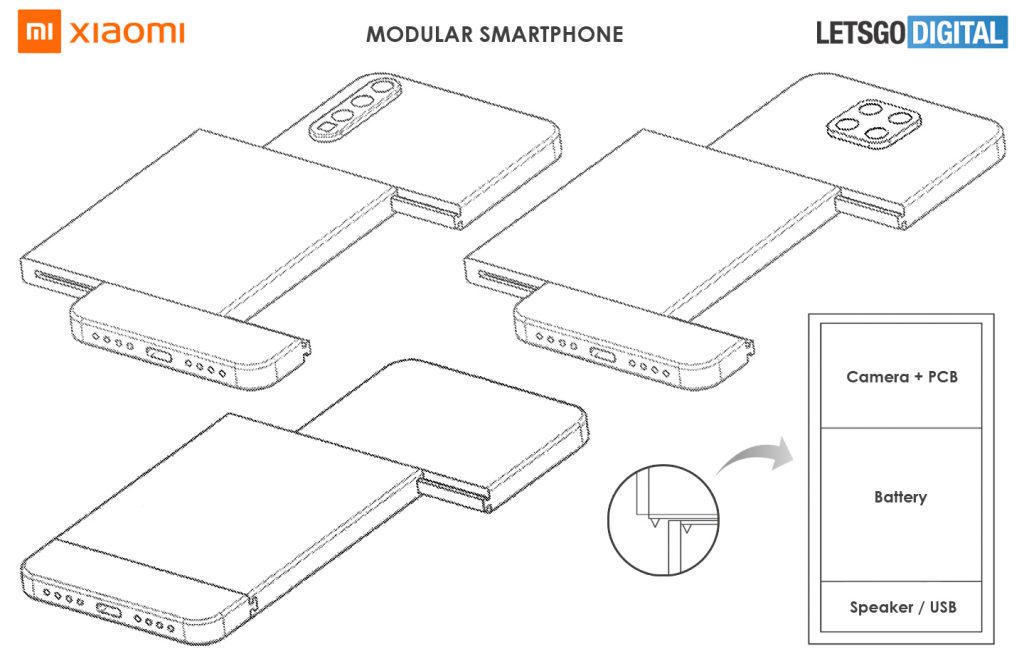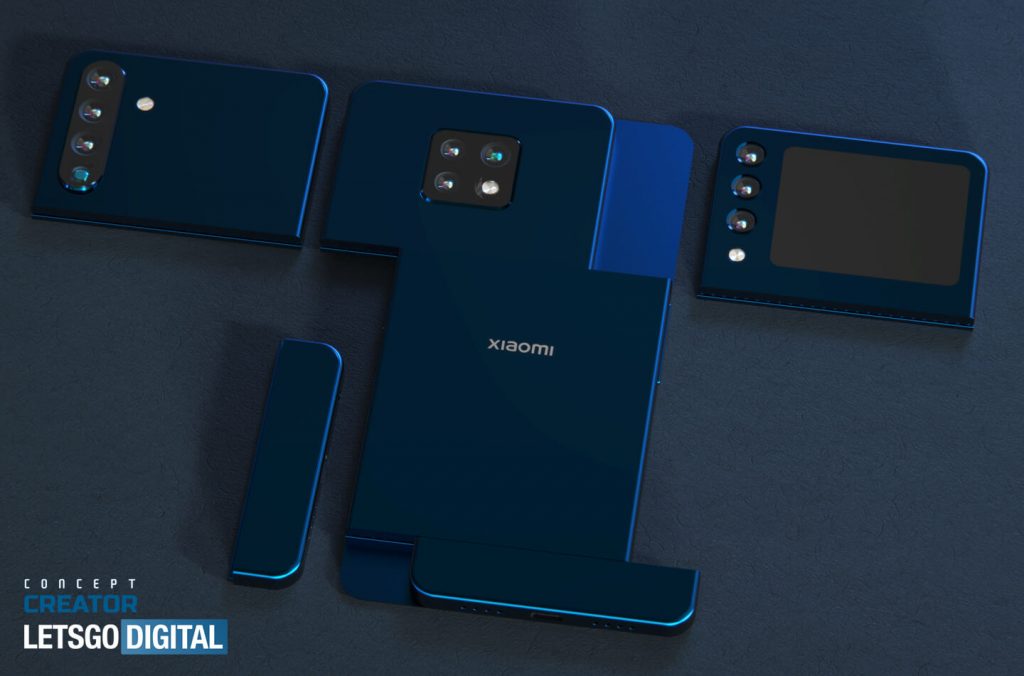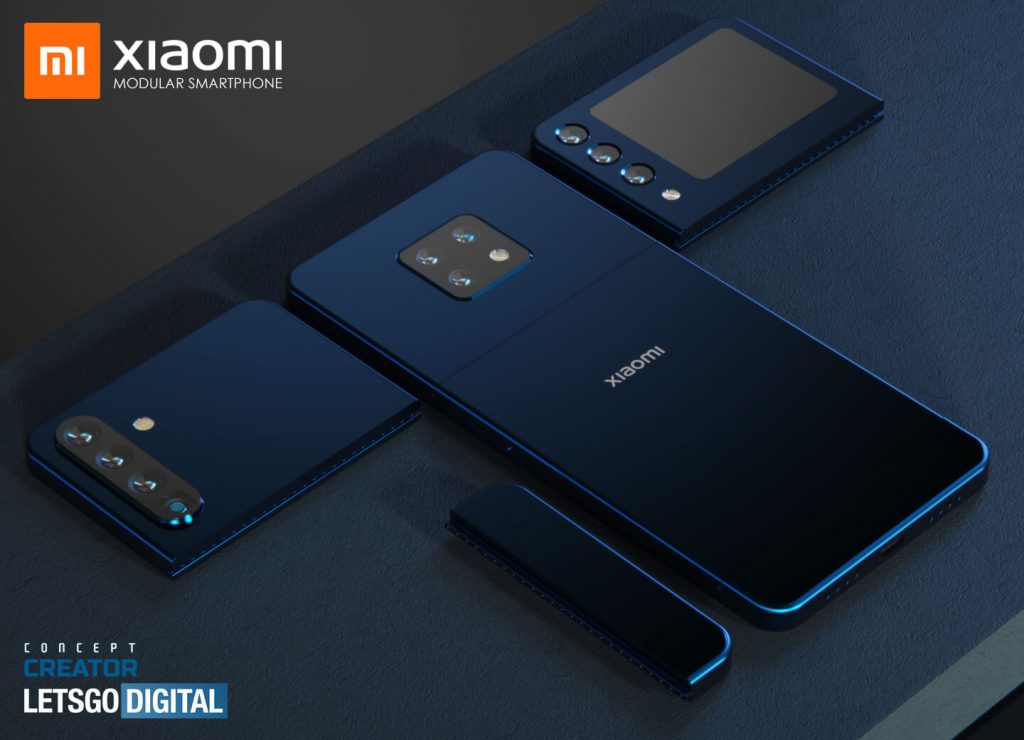Xiaomi’s modular phone patent takes a cue from Google’s Project Ara
Just a patent though

We have seen semi-modular phones like the LG G5 and the Moto Z. Now, Xiaomi seems to be looking to achieve what Google could not with Project Ara. The Project Ara, if you recall, came with an idea to bring easily swappable modules to smartphones thus adding features that users want.
While it was a great idea on paper, however, multiple practical issues meant that Google had to compromise with the basic idea of modularity hence the project was shelled. Now LetsGoDitgital has found a new patent that Xiaomi has been awarded.
The patent sketches and the documentation suggest that the Chinese smartphone maker plans to make a phone that will have four modules in all. The top part is expected to house the camera and the PCB, the middle part will house the battery and the bottom block will house speakers and the charging mechanism while the fourth and the most important one will be the display that will hold all these modules together at its back.
- Huge Android 12 leak reveals more of its revamped design
- Upcoming smartphones in India for May 2021: Specs, launch date, price

The patent documents reveal designs of several modules that Xiaomi has imagined. For instance, one of the designs shows off a top module with four vertically aligned cameras, one of which has a periscope zoom capability. While another one hints at the presence of a massive secondary display and a triple camera setup. Another module has a triple camera setup aligned in the centre quite like the Redmi Note 9’s camera Island.
Similarly, the bottom module can also bring additional functionalities like a loudspeaker etc. The publication states that these modules can slide into their place or remove when required with the help of a rail system. Once a module is firmly set in its place and “make contact with each other and the device can be put into use.”




But, what about the front camera?
While the entire back panel can be swapped according to the requirement, according to the documents the front block just consists of a display panel. The patent does not specify anything about the front camera location, however, in this day and age, it is impossible to imagine a phone without a selfie camera until and unless you have a trick or two up your sleeves.
Xiaomi has itself patented quite a few designs off late and some of them hint at a detachable front camera. Another recent patent hinted at a rotating under-display camera. The company may even decide to use any of these setups on this phone or may even add a regular under-display selfie camera. As of now, there is little information about the same.
Get daily insight, inspiration and deals in your inbox
Sign up for breaking news, reviews, opinion, top tech deals, and more.
Will Xioami ever release a modular phone?
While the idea of a modular phone may excite any tech enthusiast, however, there are quite a few limitations and a ton of benefits. Talking about the benefits first, it offers the flexibility of adding features at your will. Users can simply add a speaker module in case they are watching a movie or want to enjoy music when they are out. Similarly, a more powerful camera module can be added whenever the need arises.
Even repairability becomes extremely easy. In case the battery pack has lived its age, users can simply replace it with a new one without even needing to pop open the phone or take it to a service centre. This in turn reduces eWaste and increases the life of a device once bought.
However, making sure that there are enough modules available for users to even think of buying a modular phone is going to be a massive task. Further movable parts also would mean a higher risk of damage in case of a fall or repeated removals.
Most importantly, the longer life of a smartphone will also not be financially apt for a smartphone company. These companies survive by offering multiple options to purchase and hence create an urge to upgrade. With modular phones, upgrading the device may not offer Xiaomi the same financial benefits as selling a new device would.
Hence, this modular phone can only become a reality when Xiaomi can answer these challenges until then it may just remain as a concept.
Want to know about the latest happenings in tech? Follow TechRadar India on Twitter, Facebook and Instagram!
Jitendra has been working in the Internet Industry for the last 7 years now and has written about a wide range of topics including gadgets, smartphones, reviews, games, software, apps, deep tech, AI, and consumer electronics.
